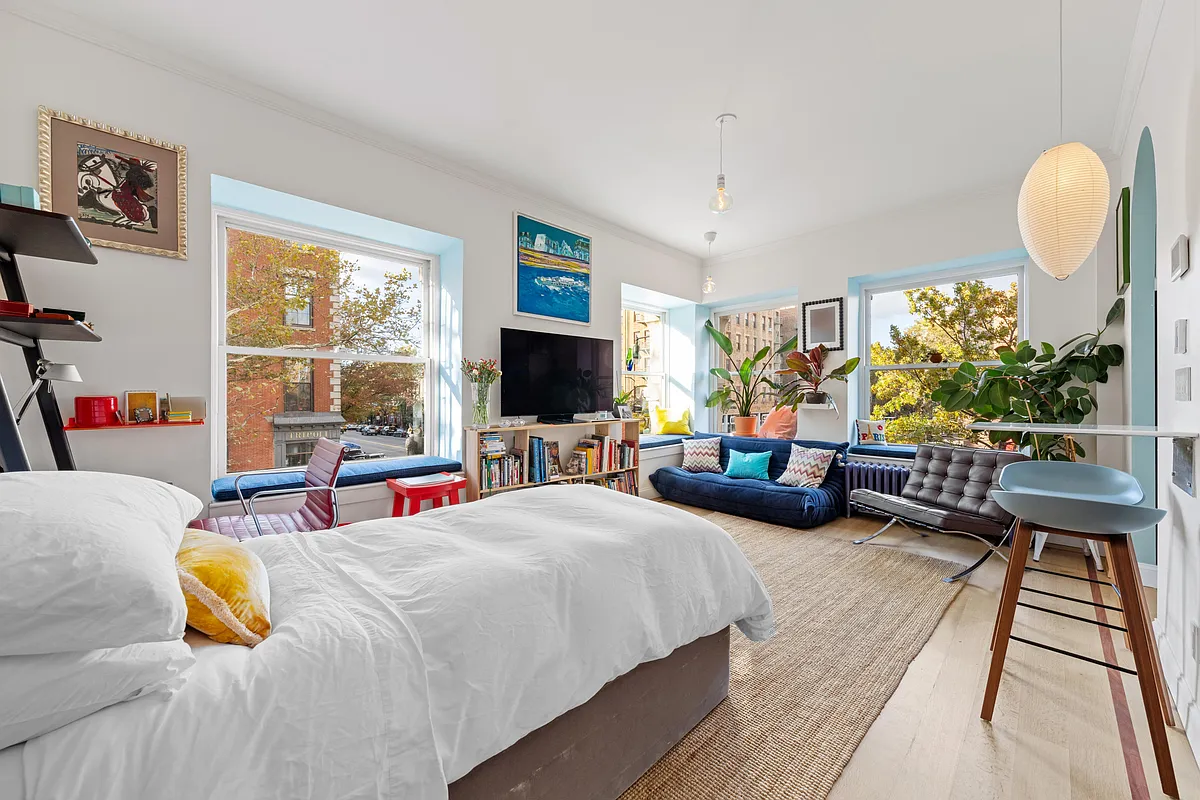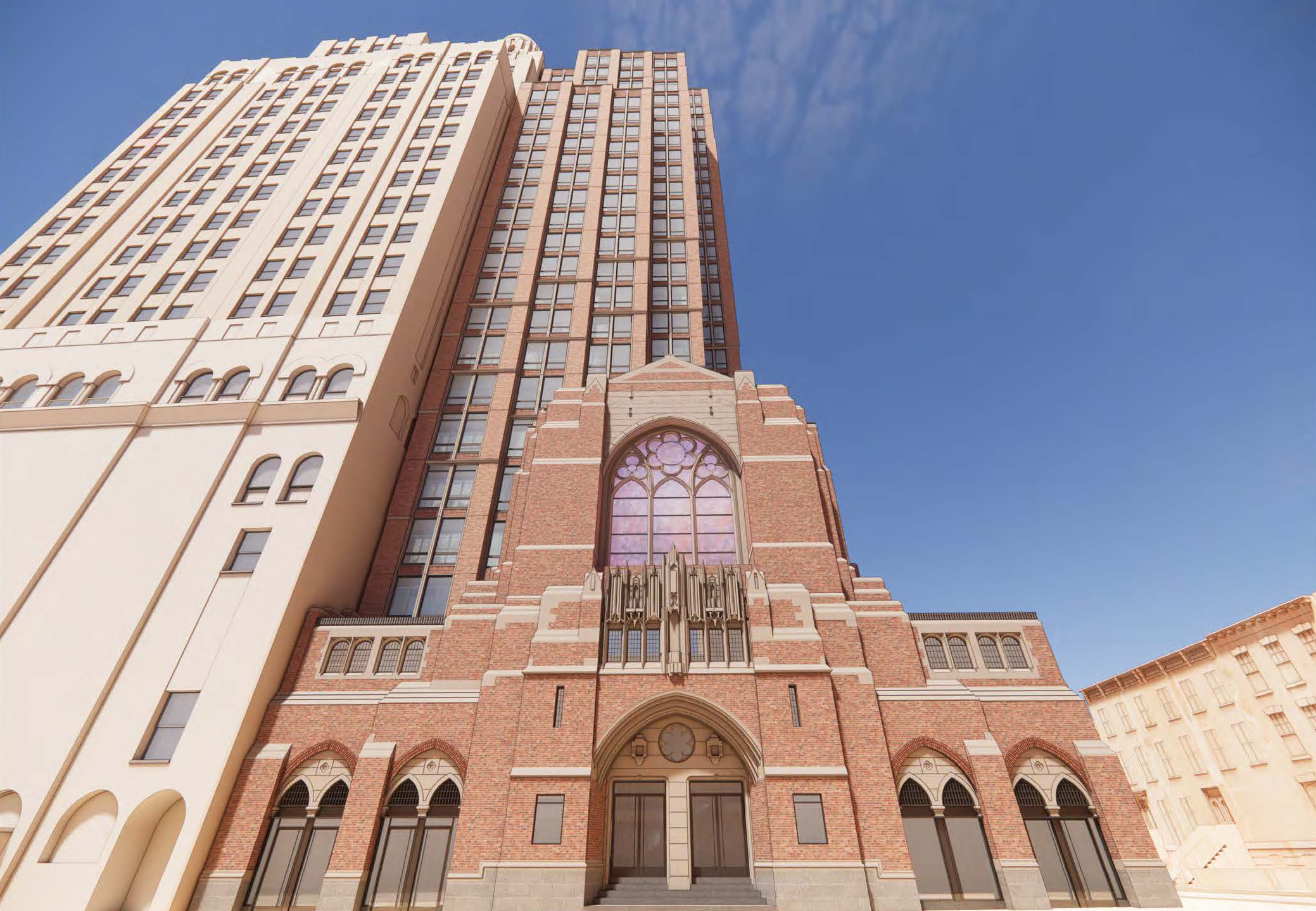Building Boom Altering Neighborhood Landscapes
One part of today’s NY Times story on the housing boom that is reaching the farthest corners of the five boroughs is how it is changing the landscape of many neighborhoods–often for the worse. While building bonanza has done a lot to improve the housing stock in areas that developers would not have touched a…


One part of today’s NY Times story on the housing boom that is reaching the farthest corners of the five boroughs is how it is changing the landscape of many neighborhoods–often for the worse. While building bonanza has done a lot to improve the housing stock in areas that developers would not have touched a decade ago, the changing of zoning regulations and the squeezing out of every last drop of FAR has also resulted in buildings that look completely out of context, like the one in the photo above.
Housing Boom Echoes [NY Times]





It is the architecturally significant and pretty neighborhoods that need saving, not the ugly ones. Sorry if that offends people. And while the building in the picture is ugly and out of context, I do not think that the area looks like one in which landmarks should or would get involved. Linus, to be so ridiculously pc to say that it would be hard to say to someone that they should deal with big condos and not you because they do not live in a historic neighborhood is your liberal guilt issue. Of course they should have to deal with it, they don’t live in a landmarked or historically significant neighborhood that justifies the zoning restriction.
And to escap, there are not many landmarked areas in Brooklyn or NYC. There are plenty of places that can be developed, so your post really rants about something that is not a concern. People, such as you on your brownstone block, live there because that is the type of environment they like. If they wanted a highrise, there are many more neighborhoods than the brownstone ones in which they can look for such a house. And NY does receive a lot of income from tourism too, just like the European cities mentioned. It also receives a lot of money from the financial services industries in the city, whose workers drive a lot of the brownstone purchases and preservation/gentrification efforts, keeping NYC workers in the city instead of the burbs, paying NYC income tax.
The age of European cities IS relevant. London, Paris and Rome get billions of $ a year from tourism, and preserving sunset park or bayside queens is not going to attract that kind of tourism, ever.
There is a time and a place for landmarking and preservation, no doubt. I live on a bstone block and wouldn’t want to see half of the historic bldgs destroyed to build a casino or an airport. But landmarking is a controversial issue b/c it is essentially imposing the will of the majority on private individuals, telling them what they can and can’t do with their own property. The line between preservation and stagnation is thin, and the economic costs of excess zoning can be great. The city should preserve beautiful, historic neighborhoods but should be selective in which ones are designated as such. The one in the pic above should not count, in my opinion. The rest should be left to development. NY’s great tourism appeal is its modernity and dynamism, not its ancient ruins or medieval backstreets.
“…efforts should be made to preserve what little old is left, which would including not putting up ugly out of context buildings in popular historic neighborhoods.”
I’d love a little definition of that last term. Does it mean ugly, out-of-context buildings are OK in, say, Bensonhurst, but not the better-heeled neighborhoods that tend to get written about on this site?
I have a house in Park Slope and I would certainly benefit from anything that restricts the building of big monstrosities on my block, since I’ve already got my piece of the rock. So I’m happy about the zoning in my neighborhood to the extent that it works in my self-interest.
But my self-interest is just that: *my* self-interest. I would have a hard time telling somebody that they should have to deal with big condo buildings and not me, because my block is prettier than their block. Not for my sake, of course, but for the greater aesthetic good of our fair city. And while they listen to the pounding of construction machinery, they can at least rest assured that New York’s historic beauty is being preserved — where I live.
To “i own a condo” – the older age of the London, Paris, Rome is irrelevant. They continue to be vibrant modern cities without destroying their historic buildings and neighborhoods. New York is a city of constant architectural change, yes, but without some check on that, there would be no contiguous brownstone neighborhoods or historic architecture. Look at Penn Station for goodness sake! I like the mix, but efforts should be made to preserve what little old is left, which would including not putting up ugly out of context buildings in popular historic neighborhoods.
To “i own a condo” – the older age of the London, Paris, Rome is irrelevant. They continue to be vibrant modern cities without destroying their historic buildings and neighborhoods. New York is a city of constant architectural change, yes, but without some check on that, there would be no contiguous brownstone neighborhoods or historic architecture. Look at Penn Station for goodness sake! I like the mix, but efforts should be made to preserve what little old is left, which would including not putting up ugly out of context buildings in popular historic neighborhoods.
Anon at 1:35 – The USA is much younger than Europe, I don’t think we can compare the look sof our cities to theirs.
OE — Good point, I am one of those people who prefers to live in a condo, not a brownstone. It has NOTHING to do with looks. Are brownstones “prettier” and more “charming” than condos? Hell yes! Who could argue with that? My condo is not architecturally pioneering by any means. But what I love about my condo is: its great, convenient location AND the “automated” style of living… my 24-hour doorman, gym downstairs, garbage chute, elevator, etc… I like the ease of life there and the fact that general maintenance is taken care of for me. I don’t have to think about it! So not ALL decisions on where to live are based solely on architecture and looks.
There are not many historic brownstone neighborhoods left in NYC. That is the primary reason to be concerned with unchecked development in those few pockets that remain.
The building may not look ugly to people moving from eastern europe .. in fact they probably like it more then those small houses next door. Our sense of beauty is subjective here. An important point I gathered from this article is that there ARE people who want all those condos popping up everywhere that the “brownstoners” dislike… in fact that has been the case for the last 100 years, thus the decline of the row house. We are the exception, not the rule. A million immigrants from south america, eastern europe, etc will decide how Brooklyn will look in 20 years, not us. And it’s the only way cities like NY can survive, there is just not enough population growth among city yuppies.
London’s done just fine without towers in every low rise neighborhood, same with Paris, Rome …